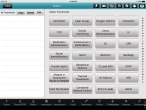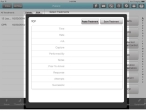Administer transcutaneous pacing (TCP) to the patient
Transcutaneous pacing (TCP) is for temporary management of symptomatic bradycardia, including heart blocks (adults/adolescents and children with a heart rate less than 60 beats per minute).
-
(If you have not done so already) Add a new incident, or open an existing incident, as described Add or edit an incident.
By default, the Scene tab appears.
-
At the bottom of the screen, touch Treatments.
A list of possible treatments appears on the right side of the screen, and a summary of any treatments you previously performed appears on the left side of the screen.
-
Touch TCP.
The TCP dialog box for gathering information related to the treatment appears.
-
In the dialog box, enter data as described in Understand the interface and data entry in it.
Field Information needed Time
The time the treatment was administered to the patient. By default, this value is populated with the computer's system time when you selected this treatment option.
Rate
The pacing rate used for the TCP device.
mA
The amount of current delivered until electrical and mechanical capture is achieved.
Capture
An indication of whether electrical and mechanical capture is achieved, as demonstrated by palpable pulses that correspond to electrical pacing spikes (maximum 120 mA).
Performed By
The person who performed the treatment.
Notes
Any additional information related to the treatment.
Prior To Arrival
Indicate whether or not actions were performed on the patient before you arrived on the scene.
Response
An indication of the patient's response to the treatment.
Attempts
The number of attempts made at performing the treatment on the patient.
Successful
An indication of whether or not the treatment was successful.
Complications
A list of the complications that occurred during the treatment.
-
Touch Save Treatment to save the treatment information you entered.
The Treatments tab reappears.

